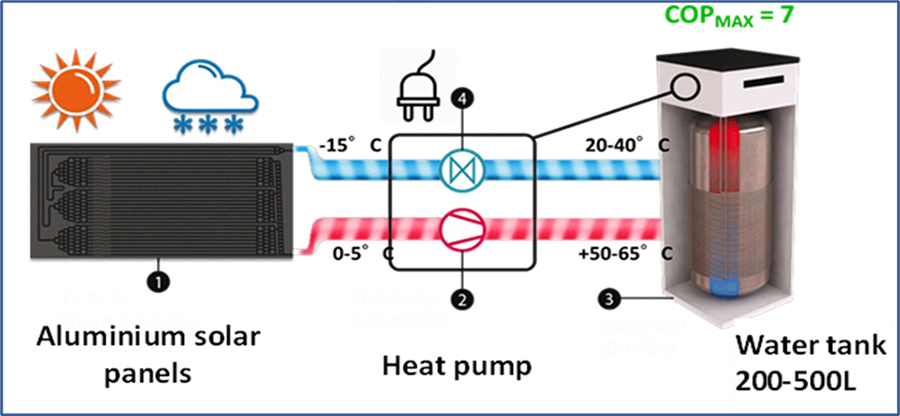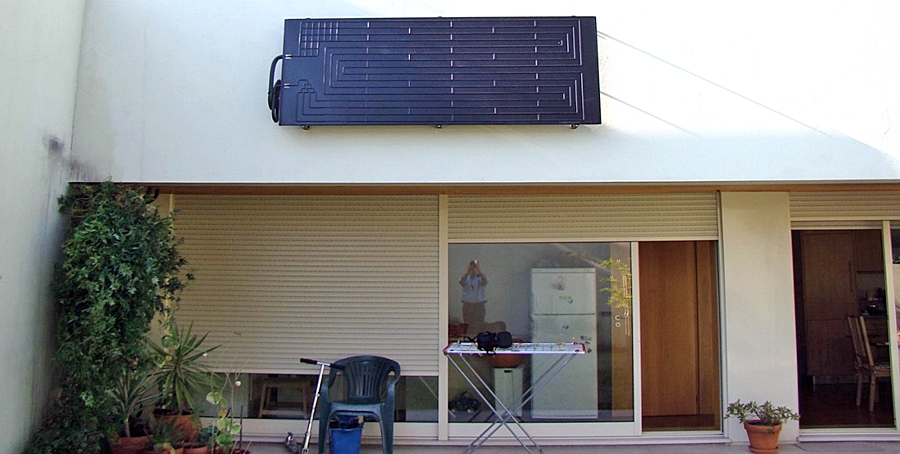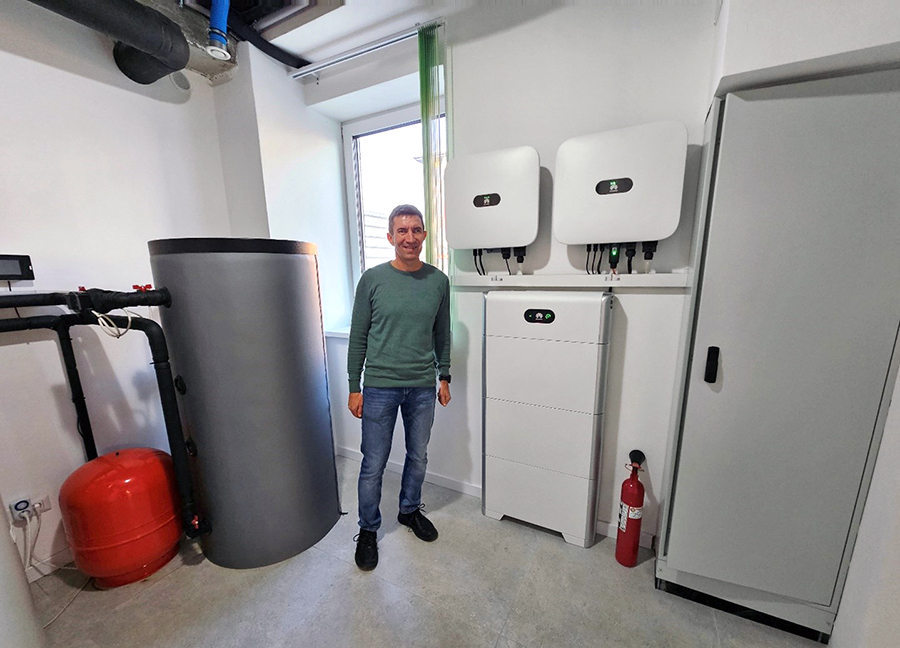Solar panels and a heat pump make a perfect match for households
When a heat pump and a solar panel are combined, heating supply becomes much more effective and carbon neutral. Norsk Energi got the opportunity to assess this technology in Romania, within the bilateral GREENER project.
A solar assisted heat pump performs better than an ordinary heat pump. By absorbing heat from the sunshine, the temperature of a fluid that passes through a heating exchange raises. The efficiency of a heat pump, which is often expressed as the ratio between useful heat energy produced to electrical energy consumption, increases, while the power consumption goes down.
-It is not unusual to combine solar and geothermal or groundwater heat pumps in Norway, where a lot of hot water is used and where a large array of solar panels could be installed, -mentions Sergei Faschevsky, manager of international operations and senior expert on energy systems in buildings. Those are mostly larger buildings, such as hotels, sport arenas, kindergartens and which are not connected to the district heating. Now we got an evidence that this technology is available at a reasonable price for the residential buildings. This is good news for people, which now more than ever are concerned about global climate and longevity of our planet, -concludes Sergei.
The expert of Norsk Energi has visited Romania to get acquainted with the solar assisted air-to-water heat pumps. In a city of Alba Iulia, he met with Dorin Flerseriu, the Romania entrepreneur and renewable energy enthusiast, who has explained the main principles of the technology.
A solar assisted heat pump has a large, flat aluminium evaporator panel that absorbs the heat from sunlight falling directly onto it and from the air around the panel. This heat is absorbed into a fluid that passes through a heat exchanger into the heat pump. This raises the temperature and transfers that heat to the hot water tank. Flat aluminium evaporator panels is the central element of this technology. If a conventional vacuum solar panel weights about 50kg and requires solid framing support, flat aluminium evaporator panels weights about 8kg only and it could be easily clamped both at a roof and wall. Heat is absorbed from direct sunlight and from the air which circulates underneath the panel.
 A combination of air-to-water heat pump and aluminium solar panel raises efficiency of the system. Electricity input for 1 kWh of hot water generated is 11 % only.
A combination of air-to-water heat pump and aluminium solar panel raises efficiency of the system. Electricity input for 1 kWh of hot water generated is 11 % only.
Dorin Flerseriu has demonstrated this system at his own office in Alba Iulia. A combination of solar panel and heat pump produces about 200l of hot water per day at 55oC, if the ambient air temperature is -15oC or higher. It means almost year-round in the Romanian conditions. The system has superseded a conventional gas fired boiler and the annual energy cost were down by approximately 40%, while CO2 emissions – by 12 ton eCO2/year. With the cost of about 5 700€ and payback – 6 years could become an attractive alternative to millions of households that use power, natural gas or coal for heating and domestic hot water. The system has been and is currently mounted at a number of larger buildings in Romania. At Maria Beatrice hospital in Alba Iulia it generates 40 m3 of domestic hot water a day and the pay back to investments is 4 years.
 Flat aluminium evaporator panels is the central element of this technology. Flat aluminium evaporator panels weights about 8 kg only and it could be easily clamped both at a roof and wall.
Flat aluminium evaporator panels is the central element of this technology. Flat aluminium evaporator panels weights about 8 kg only and it could be easily clamped both at a roof and wall.
This technology was nominated at Green Demo Day - a public competition for innovative ideas in the field of energy efficiency, aimed at small and medium-sized enterprises (SMEs) based in Alba Iulia, which design, implement or want to implement energy efficiency projects and/or solutions.
The Green Demo Day and the knowledge exchange between the Norwegian and Romanian experts were arranged under the framework of the GREEN project, a partnership between to Alba Iulia Municipality, Technical University of Cluj-Napoca and Alba Local Energy Agency (all Romania) and Norsk Energi.
Solar assisted heat pumps will not freeze, could work without direct sunlight and under the snow. This could make the technology relevant for Norway, where the electricity is still widely used by households for heating and domestic hot water.
-It could be interesting to test this technology in Norway, as a spin-off to the GREENER project” – concluded Sergei Faschevsky.
Facts:
GREENER is the joint Romania-Norwegian project aimed to actions focused on increasing the knowledge of renewable energy, energy efficiency and energy security for the local community of Alba Iulia and proximity. Funding source is the Norwegian Financial Mechanism, Energy Programme in Romania, Focus area: Increased knowledge on renewable energy, energy efficiency – Awareness raising general public and Training
More information about Norway Grants - https://eeagrants.org/
As a centre of the Norwegian competence on energy, Norsk Energi actively engages itself in the related knowledge exchange activities and partnerships under the Norway Grants Programme. In recent years, Norsk Energi has been involved in many Norway Grants projects in Bulgaria, the Czech Republic, Latvia, Poland and Romania. Our involvement has focused on advisory in energy management, energy efficiency analyses and projects that reduce air pollution.
Alba Iulia Municipality is situated in the west-central part of Romania, in the historical region of Transylvania. Alba Iulia Municipality actively participates in several European projects following its strategy of transformation into a “green innovative city”.
Contact: Sergei Faschevsky, Norsk Energi.
 Dorin Flerseriu, entrepreneur and renewable energy enthusiast from Alba Iulia is proud of his solar heaters and photovoltaics, heat pump and heat recovery unit. He was surprised to find many of such installations during the study visit to Oslo in January 2024.
Dorin Flerseriu, entrepreneur and renewable energy enthusiast from Alba Iulia is proud of his solar heaters and photovoltaics, heat pump and heat recovery unit. He was surprised to find many of such installations during the study visit to Oslo in January 2024.

